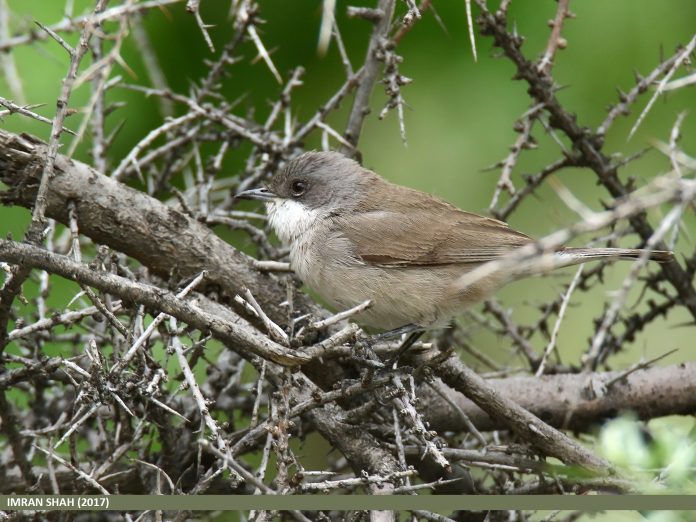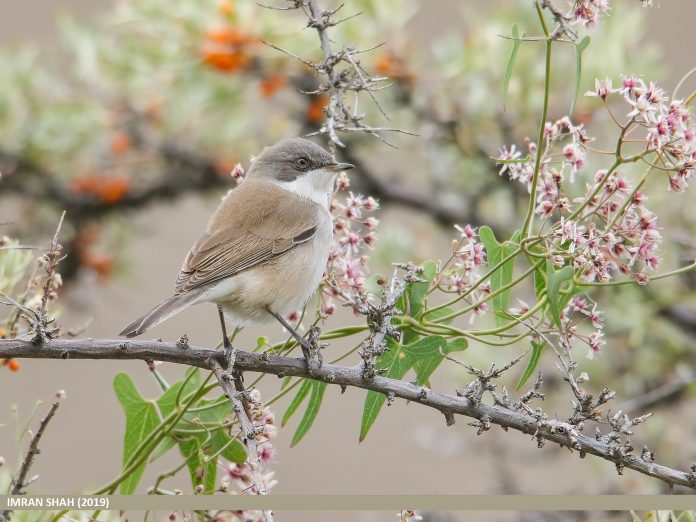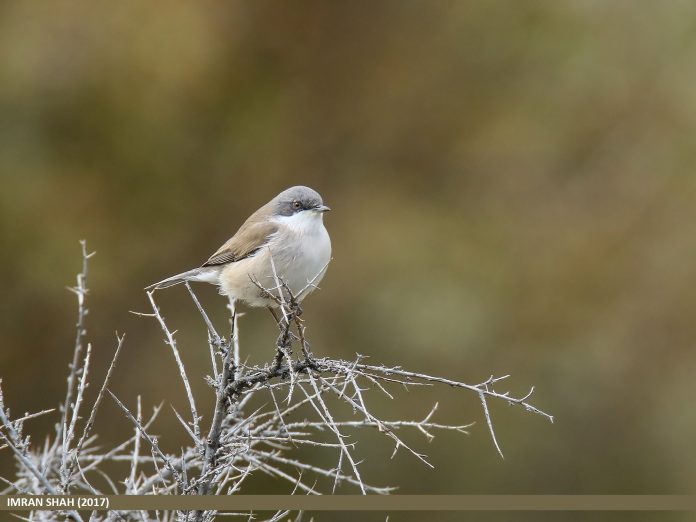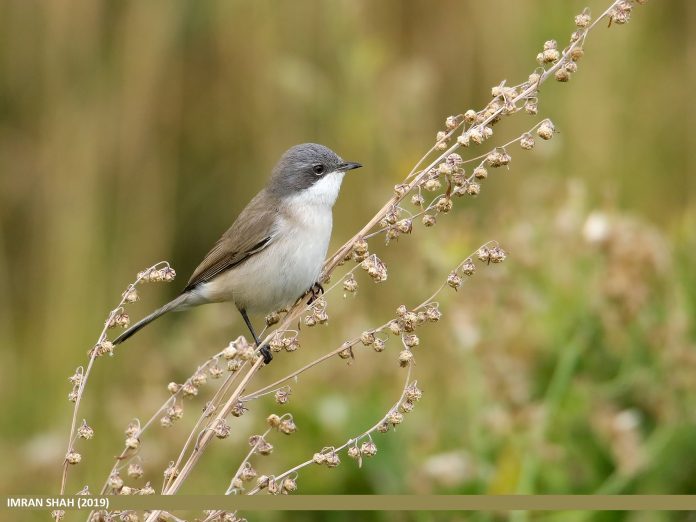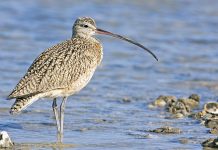The size of the lesser whitethroat is about 13.5cm in length. In all plumages and races, a combination of dull grayish-brown upper parts (greyer on the head), diffusely darker ear-coverts, blackish legs, small bill, arboreal habits, and relatively small size is distinctive. Individually fairly variable, some having slate-grey ear-coverts and quite brown upper parts, others are more washed out on upper parts and have ear-coverts only slightly darker than the crown.
The confusion with the other species is unlikely if seen well but compare with the female Sardinian Warbler and much larger and lankier female Orphean Warbler, both of which can recall Lesser Whitethroat in coloration.
Easily separated from longer-tailed Common Whitethroat by lack of rufous in wings and pale legs; also has darker iris (adults only) and usually no white eye-ring, or only an indistinct one (mainly below the eye). (Note: can show a more distinct, but broken, white eye-ring in fresh autumn plumage, when a pale supercilium may also be present). However, they are much less skulking than others of the genus, feeding in the canopy of shrubs and small trees rather than skulking in ground-level scrub like most other small Sylvia warblers.
Both sexes are similar. Aging is difficult, but 1st-years in autumn has a gray iris (brown in adults), and outer tail feathers are less pure white, and more sullied with grayish-brown than in adults, a difference that can also be applied in the following spring if the tail is not too abraded.
Lesser whitethroat calls of all forms are similar, chiefly a dry, sharp, tongue-clicking ‘tek’ or ‘tuk’, freely repeated; also a short ‘churr’ of alarm, and a harsh chatter, less staccato and higher in pitch than the chatter of other small Sylvia. A scolding, Blue Tit-like ‘chay-ch-ch-ch-ch’ is regularly heard from migrants in the east of our region. Lesser whitethroat song varies both between races and individually; racial distinctions are given and therefore not always valid.
Northern races: song a dry rapid, almost metallic rattle, preceded by a weak short warble (latter audible at close range); a number of birds have the warbling phrase more strongly developed and may exclude the rattle from their song, this seeming to be the case, especially with blythi. ‘Hume’s (Lesser) Whitethroat’: song lacks rattle, being quite a melodious, relatively loud warbling, recalling certain phrases of Blackcap. ‘Desert (Lesser) Whitethroat’: a sweet, warbling phrase, apparently without the rattle of the nominate race.
The three groupings may represent separate species, but quite widespread intergrading and variability of song types suggest that full speciation has not yet been achieved. At least 5 intergrading races fall into three groups.
Northern group (nominate race and blythi): Nominate race breeds across most of our region, intergrading into more eastern blythi, ‘Siberian Lesser Whitethroat’, in W Siberia. Race blythi (a vagrant to Europe and the Middle East) differs from nominate race in wing formula (2nd primary usually falls between tips of 5th and 6th or equals 6th innominate.
It usually falls between 6th and 8th in blythi) and in habitually having warmer brown mantle and wings in fresh plumage, with sandy-ginger wash to tertials (hinting at Common Whitethroat) and whiter underparts with less contrast between throat and breast, but many are indeterminate.
The ‘Hume’s (Lesser) Whitethroat’ (althaea and perhaps caucasica): Slightly larger, stouter-billed, and more uniformly dark grey above than northern forms, with ear-coverts contrasting less with crown and with more white in the outer tail. True althaea breeds from Iran eastwards and has been recorded in the extreme SE of our region in winter.
Slightly smaller caucasica of Caucasus, S Balkans, and Turkey south to Northern Israel is of uncertain status: often considered an intergraded with the northern group, but vocally it is close to althaea. ‘Desert (Lesser) Whitethroat’ (minula): Breeds in Central Asia, wintering in dry scrub from Iran and Eastern Arabia eastwards. Lesser whitethroat has been recorded as a vagrant in the European region (Israel).
A small, slim, elegant, and very grayish-sandy race, with strongly contrasting darker ear-coverts in fresh plumage. Other extralimital forms link minula with blythi and curruca. It is a common widespread bird, in addition to its mapped range, and has bred N Finland and Faeroes. Mostly winters south of the Sahara and the Arabian Desert.)
Lesser whitethroat is found in a wide variety of bushy areas, including large gardens, parks, heathland, woodland edges and clearings, young plantations, hedges, and cultivation mixed with bushy patches. It is also called, Siberian Lesser Whitethroat (S. c. blythi); Hume’s (Lesser) Whitethroat (S. c. althaea); Desert (Lesser) Whitethroat, Small Whitethroat (S. c. minula).
Read More – Collared Flycatcher
